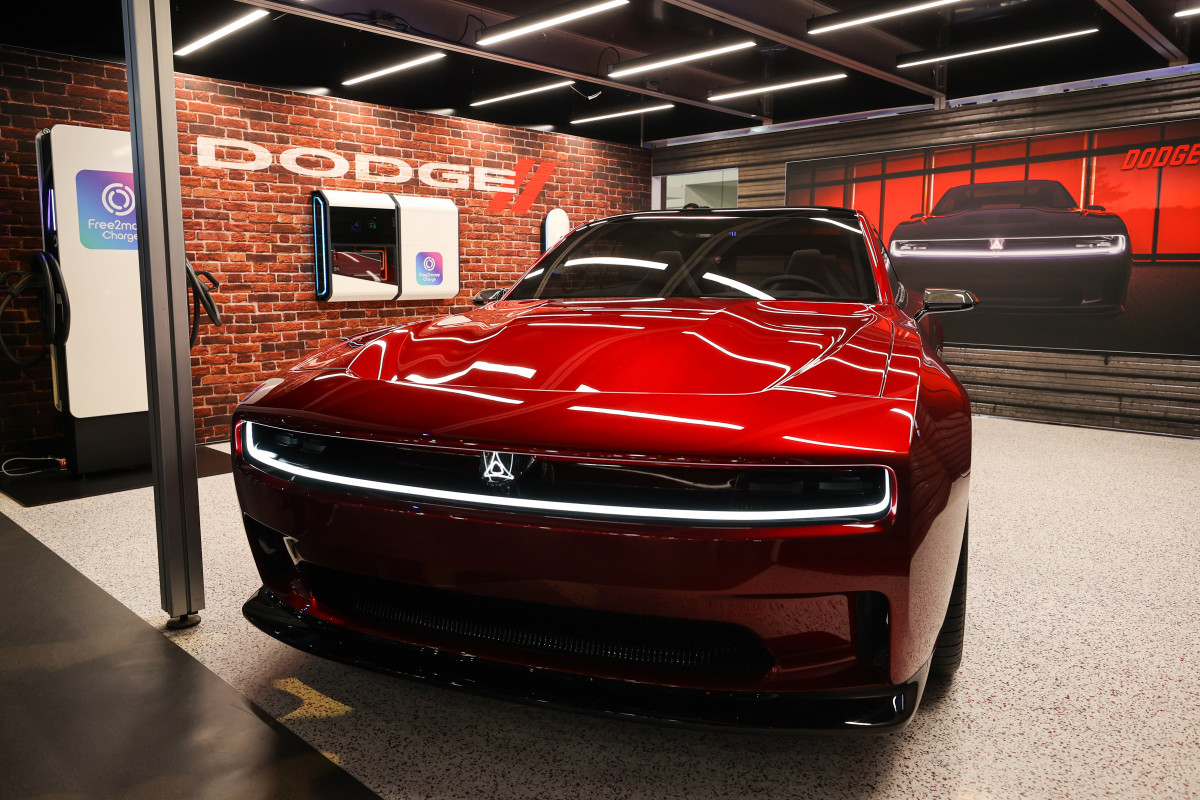
EVs have come a long way.
Though technology is continuously evolving, the most powerful electric cars from the likes of Tesla (TSLA) , for instance, can have comparable power numbers and off-the-line performance in comparison to the best American V8 muscle cars.
Though EVs lack an engine, some manufacturers have come up with solutions to aid drivers in enhancing their driving experiences. For instance, Porsche and Audi have come up with "fake engine noise" that comes on during acceleration.
Over at Stellantis (STLA) , engineers have gone one step further to enhance the full electric muscle car experience.
Related: Porsche and Delta have a high-octane solution for tight connections at busy airports
According to a filing with the World Intellectual Property Organization (WIPO), Stellantis submitted an application for what it calls Active Sound Enhancement (ASE) and Active Vibration System Enhancement (AVE).
In the filing, Stellantis notes that battery electric vehicles (BEVs) produce very low noise levels, but in systems where noises are produced, they "do not produce an authentic engine sound nor are they as loud as a high-performance vehicle."
Additionally, they reason that "vehicles that have traditionally been considered 'muscle cars' or 'high-performance' may no longer have a characteristic sound admitted through their exhaust systems."

With Active Sound Enhancement (ASE) and Active Vibration System Enhancement (AVE), engineers at Stellantis aim to immerse drivers, pedestrians and other motorists in and around its new EVs into the feeling that it is being powered by a big, 6.4 liter Hemi V8 engine instead of batteries and electric motors.
According to the documents, the AVE system would send vibrations in a few ways. First, a force generator would be able to vibrate the chassis or body of the EV in accordance with data from sensors recording driving dynamics such as motor speed and pedal position. Additionally, it would also send sensations at key touch points such as the steering wheel and the driver's seat.
The vibration system is set to work in tandem with ASE, where the same sensors would control speakers pumping in fake engine noise to both the cabin and the outside world.
More Business of EVs:
- A full list of EVs and hybrids that qualify for federal tax credits
- Here’s why EV experts are flaming Joe Biden’s car policy
- The EV industry is facing an unusual new problem
Dodge is set to debut the 2025 Dodge Charger Daytona on March 5. The Daytona is aimed to be Dodge's EV replacement for the outgoing Charger and Challenger muscle cars.
TheStreet has reached out to Stellantis for comment.
Related: Veteran fund manager picks favorite stocks for 2024







